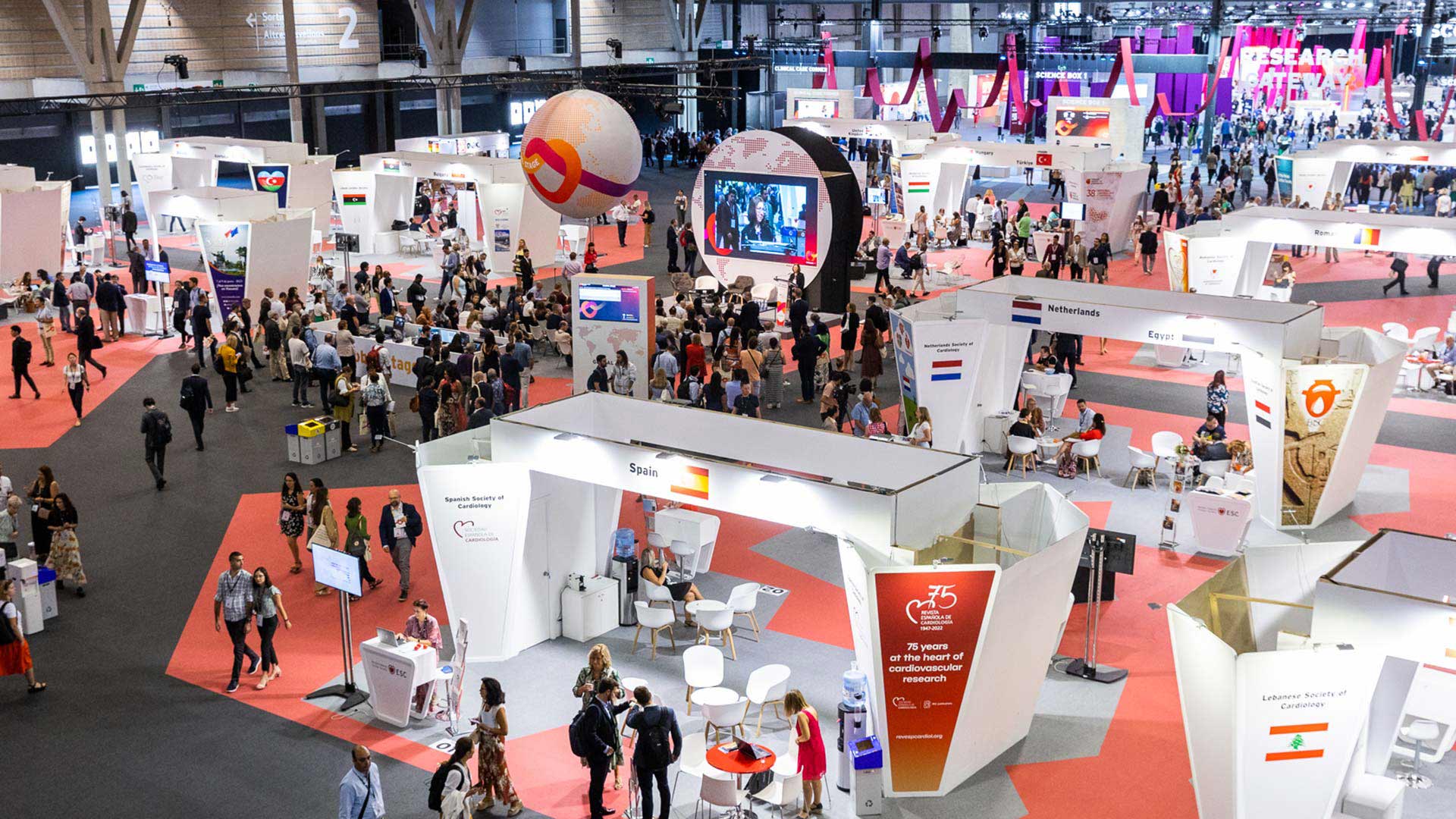ESC 2022 European Society of Cardiology Congress

The return after the pandemic presented us with new scenarios and challenges in designing such events. Now more than ever, it was essential to create attractive spaces that would evoke emotions in attendees and become an integral part of the congress experience.
The Annual Cardiology Congress is a prime example of this. 4foreverything was responsible for designing and producing various areas and stages of the congress. While staying true to the association's goal of making the congress a more memorable experience than ever, we worked on the design of several areas: Global Community, Research Gateway, The Zone, and Meeting on the Go.
In our design, we prioritized creating spaces that provided continuity and consistency to the overall image of the congress. A common element linked the main spaces, such as the Research Gateway for medical presentations and The Zone for various conferences. Large fabric representations of electrocardiogram lines were hung from different points in the space.
The Global Community, an area for institutional participants of the congress, was developed using the hemoglobin structure as a constructive concept. This concept served as a basis for designing and distributing its spaces, incorporating graphic elements representing how this protein transports oxygen to tissues through different substructures and a central core.
This area was divided into different sections, separated by tiled streets and pathways, with the main stage at its epicenter. Each section combined open stands with spacious meeting and networking areas, all designed with the same triangular modules used to build the stands.
To facilitate relationships between attendees, exhibitors, and participants, an open space design was implemented, allowing for easy communication and a comprehensive view of the congress.
The designs were produced using natural materials and vegetation to make the space attractive and pleasant, taking advantage of the congress's sustainable positioning.


